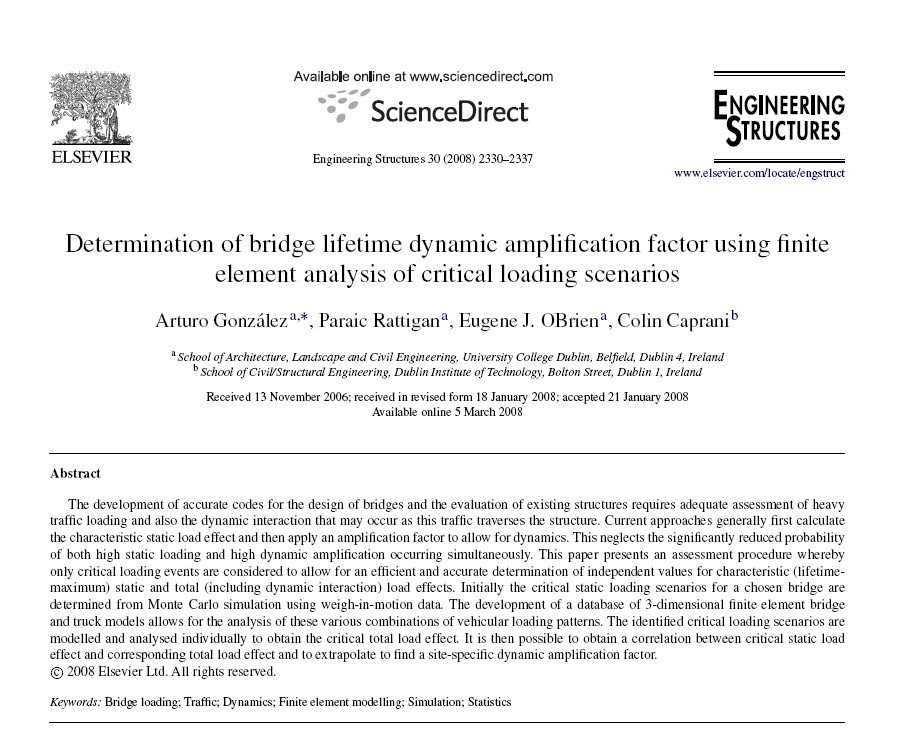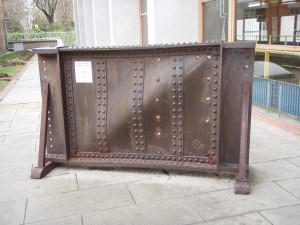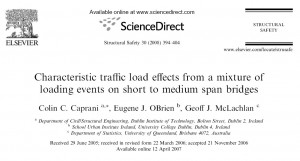Journal article published
The paper titled Determination of bridge lifetime dynamic amplification factor using finite element analysis of critical loading scenarios will appear in the September 2008 edition of Engineering Structures. This journal has an impact factor of 0.986 for 2007.
This paper outlines the simulations behind the dynamic interaction model which was used in the bivariate extreme value work, detailed here.
The full reference for this paper is:
Gonzalez, A., Rattigan, P., OBrien, E.J. and Caprani, C.C. (2008), ‘Determination of bridge lifetime dynamic amplification factor using finite element analysis of critical loading scenarios’, Engineering Structures, 30(9), September, pp. 2330-2337. http://dx.doi.org/10.1016/j.engstruct.2008.01.017.
Abstract
The development of accurate codes for the design of bridges and the evaluation of existing structures requires adequate assessment of heavy traffic loading and also the dynamic interaction that may occur as this traffic traverses the structure. Current approaches generally first calculate the characteristic static load effect and then apply an amplification factor to allow for dynamics. This neglects the significantly reduced probability of both high static loading and high dynamic amplification occurring simultaneously. This paper presents an assessment procedure whereby only critical loading events are considered to allow for an efficient and accurate determination of independent values for characteristic (lifetime-maximum) static and total (including dynamic interaction) load effects. Initially the critical static loading scenarios for a chosen bridge are determined from Monte Carlo simulation using weigh-in-motion data. The development of a database of 3-dimensional finite element bridge and truck models allows for the analysis of these various combinations of vehicular loading patterns. The identified critical loading scenarios are modelled and analysed individually to obtain the critical total load effect. It is then possible to obtain a correlation between critical static load effect and corresponding total load effect and to extrapolate to find a site-specific dynamic amplification factor.



